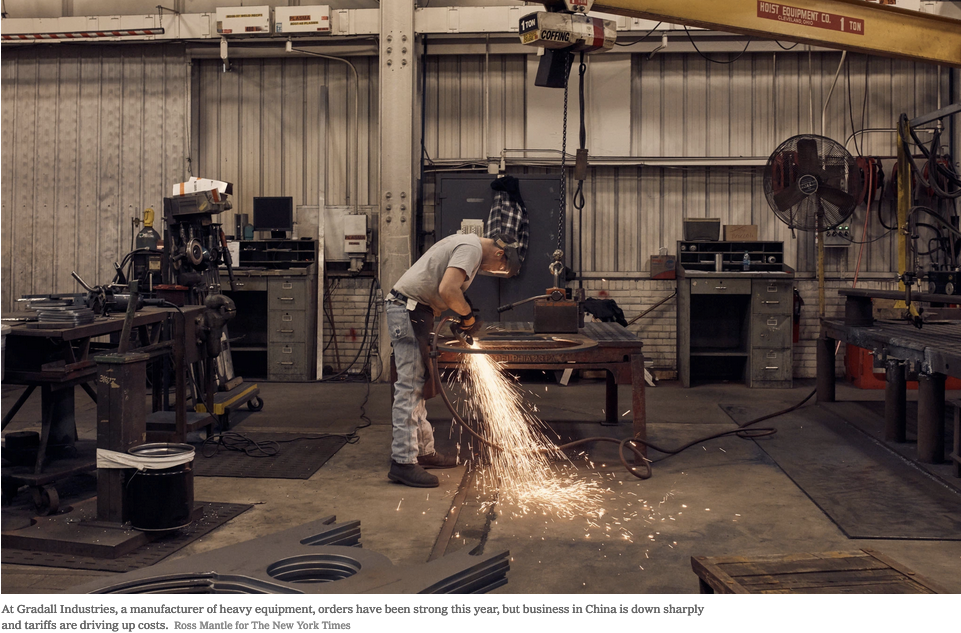For President Trump’s first two years in office, an unexpected rebound in manufacturing jobs helped bolster his claims that he was restoring the United States’ battered industrial sector. Now, that surge may be nearing its end — in part because of his own trade policies.
American manufacturers have added nearly half a million jobs since Mr. Trump took office, including for the past 19 months in a row. That streak, the longest since the mid-1990s, could hit 20 when the government releases March hiring data on Friday.
But concerns are mounting about how long that strength can continue. Employment growth for the sector in February, at 4,000 jobs, was the weakest in more than a year, and data from the payroll processing firm ADP on Wednesday showed the number of factory workers falling in March. Major automobile manufacturers have been cutting jobs; General Motors drew Mr. Trump’s ire last month when it idled a factory in Lordstown, Ohio, and eliminated 14,000 positions.
American manufacturers are being battered from all sides: by tariffs that are driving up their costs, by cooling growth in China and Europe that is hurting demand for their exports, and by the waning effects of the tax cuts and government spending increases that pumped up growth last year. Data from the Commerce Department on Tuesday showed that orders for capital goods, a key measure of business investment, fell in February and has trended down since last summer.




